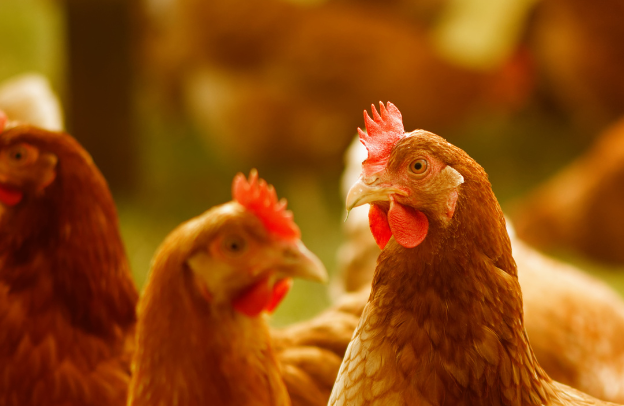African Poultry Farming Holds the Key to Real Money

There cannot be any mistake about this. Poultry Farming is a golden opportunity for African small and medium-scale farmers seeking a pathway to real financial success. As the demand for high-quality protein continues to surge across the continent, the stage is set for enterprising farmers to tap into the immense potential of the poultry industry.
Want to learn more about storytelling? Start by downloading the first chapter of The Storytelling Mastery.
In this guide, we unveil the secrets to transforming your poultry farm into a robust and profitable venture, offering insights and strategies to propel you toward financial prosperity.
Understanding the Poultry Market Dynamics
To succeed in poultry farming, it is crucial to comprehend the dynamics of the market. The increasing population and changing dietary preferences have fueled a rising demand for poultry products, making it a lucrative sector for farmers.
The Africa Poultry Feed Market size according to a report “is estimated at USD 21.69 billion in 2024, and is expected to reach USD 26.63 billion by 2029, growing at a CAGR of 4.19% during the forecast period (2024-2029).”
The poultry industry in Africa is experiencing significant growth, driven by the continent’s expanding population and socioeconomic development, over a billion people. With chicken and eggs being primary sources of animal protein for many Africans, it is noteworthy that Africa contributes only 4% to the global production of chicken poultry products.
Addressing the increasing consumption rates necessitates a boost in Africa’s poultry production.
The African Union High-Level Panel on Emerging Technologies (APET) emphasizes the importance of fostering innovation and technological capacity in African countries to overcome challenges in the poultry sector.
By incorporating innovative approaches and technologies such as automatic water dispensers, robotics, and automated feeders, the potential for expanding poultry production across the continent is substantial. Poultry Africa is also committed to enhancing local production, thereby reducing reliance on imports.
To achieve these objectives, African nations must create a conducive environment for farming innovation and technologies through strategic investments, policies, and regulations. APET encourages poultry farmers to embrace these advancements, which not only contribute to increased production capacity but also play a pivotal role in achieving nutrition and food security in Africa.
The question is, do you want to embrace this shift and position your farm strategically to meet the market demands? I think you should. So, pay attention to the following:
Choosing the Right Poultry Breeds
Not all chickens are created equal. Opt for breeds that are well-suited to your climate and market needs.
Consider dual-purpose breeds or specialized meat and egg layers based on your goals. Make informed decisions to ensure the optimal utilization of resources and maximize profits. The following need to be put into consideration:
Assess Your Farming Goals and Market Demand:
Before selecting poultry breeds, clearly define your farming objectives. Determine whether you aim for meat, egg production, or both.
Additionally, research the market demand in your region. Choose breeds that align with your goals and cater to the preferences and demands of your target market.
Consider Climate and Environmental Conditions:
Different poultry breeds thrive in specific climatic conditions. Assess the climate and environmental factors of your region, such as temperature, humidity, and altitude.
Select breeds that are well-suited to these conditions to ensure optimal health, productivity, and overall well-being of the birds. This step contributes to minimizing potential health issues and maximizing the efficiency of your poultry farm.
Evaluate Resource Efficiency and Management:
Efficient resource utilization is crucial for the success of your poultry farm. Evaluate factors such as feed conversion rates, growth rates, and reproductive capabilities of potential poultry breeds.
Consider the availability of resources like space, feed, and water on your farm. Opt for breeds that align with your resource capacity and management capabilities, as this will contribute to the overall sustainability and profitability of your poultry venture.
Mastering Efficient Farm Management
Mastering efficient farm management is the cornerstone of a successful poultry venture. It involves a multifaceted approach that encompasses modern farming practices, investment in high-quality feed, and maintaining optimal housing conditions. Implementing these practices ensures the overall health, well-being, and productivity of your poultry flock.
By staying abreast of advancements in farming techniques, you can create an environment conducive to growth and maximize the yield of your poultry farm.
One of the key aspects of efficient farm management is the incorporation of technology. Embracing innovative solutions allows you to monitor the health of your poultry with precision, detect early signs of illnesses, and take prompt actions to mitigate risks. Automated feeding systems not only provide a consistent and balanced diet to the birds but also contribute to resource efficiency.
Additionally, the integration of technology helps streamline various farm operations, reducing manual labor and minimizing the margin for error. This not only enhances overall productivity but also plays a pivotal role in cost reduction, ensuring that your poultry farm operates at its most efficient and economically sustainable capacity.
In essence, mastering efficient farm management is a dynamic process that combines traditional best practices with cutting-edge technologies to create a robust and thriving poultry farming operation.
What Poultry Farmers Need To Know About Marketing Their Poultry Business
Marketing is a crucial aspect that poultry farmers must understand to ensure the success and profitability of their business. Firstly, poultry farmers need to have a deep understanding of their target market.
This involves identifying the preferences, demands, and purchasing behavior of consumers in the local or target region. Farmers should conduct thorough market research to comprehend the dynamics of the poultry market, including pricing structures, distribution channels, and the competitive landscape.
Check out our previous article: Learn About The Best Marketing Strategies For Small Businesses With Eny Osung
Armed with this knowledge, they can tailor their products to meet consumer needs, set competitive prices, and strategically position their poultry products in the market.
Secondly, effective branding and promotion play a pivotal role in poultry business marketing. Establishing a strong brand identity that conveys quality, reliability, and ethical farming practices can differentiate your products in a crowded market.
Utilize various marketing channels, both traditional and digital, to create awareness about your poultry farm and products.
Social media platforms, websites, and local events can be powerful tools to connect with consumers directly. Engaging in transparent communication about your farming practices, emphasizing factors such as sustainability, animal welfare, and product quality, can build trust with consumers.
Additionally, offering promotions, discounts, or loyalty programs can incentivize repeat business and attract new customers, contributing to the overall success and sustainability of the poultry farming venture.
Value-Added Processing for Increased Profits
If you are serious, you can unlock the full potential of your poultry farm by exploring value-added processing. Diversify your product offerings by venturing into egg processing, poultry meat packaging, and other by-products.
This not only broadens your market reach but also adds significant value to your produce, resulting in higher profit margins. Now, here are three effective ways to increase profits through Value-Added Processing in your poultry farming business. Consider each one of them.
Diversifying Product Offerings:
One effective strategy for value-added processing in poultry farming is to diversify your product offerings. Instead of selling raw poultry products alone, consider processing and packaging them into ready-to-cook or ready-to-eat options.
This can include marinated chicken cuts, pre-cooked chicken meals, or specialized poultry products such as sausages or deli meats. By adding value through processing, you tap into new market segments and cater to the convenience-seeking consumer, ultimately commanding higher prices and increasing overall profitability.
Egg Processing and Packaging:
For poultry farms with a focus on egg production, value-added processing can be achieved through egg processing and packaging. Rather than selling eggs in their raw form, explore options such as washing, grading, and packaging them for retail.
Consider creating specialty eggs, such as omega-3 enriched or organic eggs, to cater to specific consumer preferences. Packaging eggs in innovative and eco-friendly materials can also enhance the perceived value of the product, allowing you to command premium prices and increase profit margins.
Utilizing By-Products:
Another avenue for value-added processing lies in maximizing the use of by-products generated during poultry farming. Feathers, bones, and other parts that might typically be considered waste can be processed into products such as feather meal for animal feed or fertilizer, and bone meal for use in various industries.
By efficiently utilizing these by-products, not only do you minimize waste, but you also generate additional revenue streams, contributing to increased overall profits in your poultry farming business.
Another thing to consider in your poultry farming business is Sustainable Practices. Do not underestimate that.
Implementing Sustainable Practices
Sustainable practices in poultry farming revolve around cultivating an environmentally conscious and socially responsible approach to poultry production. This entails adopting methods that minimize ecological impact, such as efficient waste management, organic farming techniques, and renewable energy utilization.
Poultry farmers committed to sustainability prioritize animal welfare, implementing measures to ensure ethical treatment and humane conditions for their flocks. By reducing reliance on chemical inputs, embracing eco-friendly alternatives, and fostering biodiversity, sustainable poultry farming aims to create a balanced ecosystem within and around the farm.
This holistic approach not only safeguards the environment but also resonates with consumers increasingly inclined toward supporting responsible and sustainable agricultural practices.
Make sure to embrace eco-friendly solutions, implement waste management strategies, and explore organic farming methods to meet the growing demand for sustainable poultry products.
Conclusion on African Poultry Farming Holds the Key to Real Money
As you embark on the journey of turning your poultry farm into a money-making enterprise, remember that success requires dedication, innovation, and a keen understanding of market trends.
By implementing the strategies outlined in this guide, small and medium-scale African farmers can unlock the vast potential of poultry farming and pave the way to real financial prosperity. seize this opportunity, embrace the challenge, and witness your poultry farm flourish into a thriving and profitable venture.
Want to learn more about storytelling? Start by downloading the first chapter of The Storytelling Mastery.





